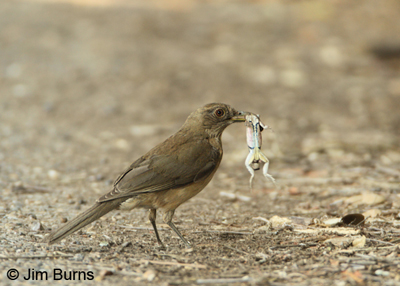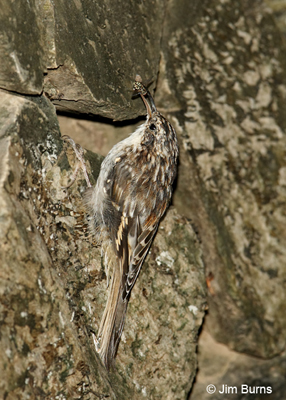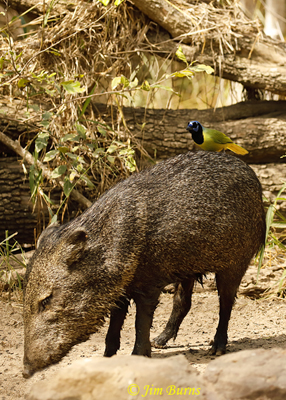
In the first place, birds are born to eat and thus spend most of their waking hours seeking sustenance (as did preindustrial humans). Secondly, birds will eat anything not precluded by the size and shape of their bodies and bills, and they’ll do anything to get it wings and feet will allow. These two considerations dictated I reduce my search to examples of birds eating and doing things to get food not generally cited in the literature or observed by birders, in other words bird behaviors that were total surprises to me, a reasonably well read, lifelong adult birder.
I’m going to begin with the Brown Creeper I watched catching flies hovering around a mountain spring one fall in Arizona. Nothing unusual about that as I have countless sightings of this species “creeping” around, and always upward, on trees of all kinds, gleaning insects in the interstices of the bark. I had never seen them taking flying insects out of the air, but that didn’t catch my attention nearly as much as the bird’s jumping off point, the vertical rock face below the spring. After every sally, for nearly half an hour, it returned to the bare rock surface. I had NEVER seen a Brown Creeper on anything other than a tree, and neither has anyone I’ve spoken to about it.
In the spring a couple years ago, out for a morning run along the Scottsdale Greenbelt before daylight, I was so shocked to see an aggregation of Black-crowned Night-Herons close together in the grass beside a fishing pond that I stopped dead in my tracks to count them. Ten, standing on the ground within twenty yards of one another! Having NEVER seen more than two or three of these fish specialists within one binocular view, perched in trees, I was gobsmacked. What were they doing and why? My best guess was channeling their “inner robin” and looking for worms. It took several days, but I did finally find a brief reference for worms as a food source for the species. What do you call a group of night-herons? It was before dawn, totally unexpected, and almost unheard of, so I’m going with “conventicle.”
The next two surprises both occurred in south Texas, both in winter. Several years ago I was walking down a trail in a state park there when a Clay-colored Thrush popped out of the brush in front of me. Though they are now an established breeder along the Rio Grande River, at that time it was only my second sighting of the secretive species in the U.S., and I assumed they left in the winter for warmer climes. But wait! It was carrying a Blue Spiny Lizard it had caught! We think of thrushes as bug and berry specialists, but this incident taught me to think of all birds as omnivorous opportunists.
Most birders have enjoyed photos of oxpeckers picking ticks and other insects from the bodies of African ungulates. There are no oxpeckers in North America, of course, but Imagine my surprise, while observing a family of Collared Peccaries (Javelinas) feeding in the Texas brush, to see a Green Jay drop onto the back of the largest one and begin walking around on the animal carefully exploring its hide. The peccary was oblivious to this intrusion, making me suspect it was not uncommon. A park ranger later told me he has seen it several times, so all I can say is our ”oxpeckers” are more beautiful than Africa’s.
My final entry for this “most surprising” list is one I wrote up a couple years ago when I observed a male Gila Woodpecker land on a vertical cliff face and pluck a Cliff Swallow nestling from a tubular nest. This was another incidence of avian opportunism which took me several days to find corroborated in the literature. Apparently our larger woodpeckers are known to take the young of other species, and I’m guessing the Gilas living along this stretch of the Salt probably piratize these nests every spring. You can see my column about this at http://jimburnsphotos.com/pages/6-8-17.html. I had never seen any woodpecker take “meat,” but all take insects, nuts, and suet, and it’s all protein, so why not?
It reminds me of the old adage—sooner or later every species will be observed in every locale—only this one is sooner or later you will see every avian species taking advantage of every food source imaginable, and some that aren’t—Red Crossbills picking through cow pies for seeds, Yes, I’ve seen that. This has been such a fun research project, I may revisit it in a later column.
Brown Creeper with fly on rock wall |
Javelina with Green Jay searching for ticks |

